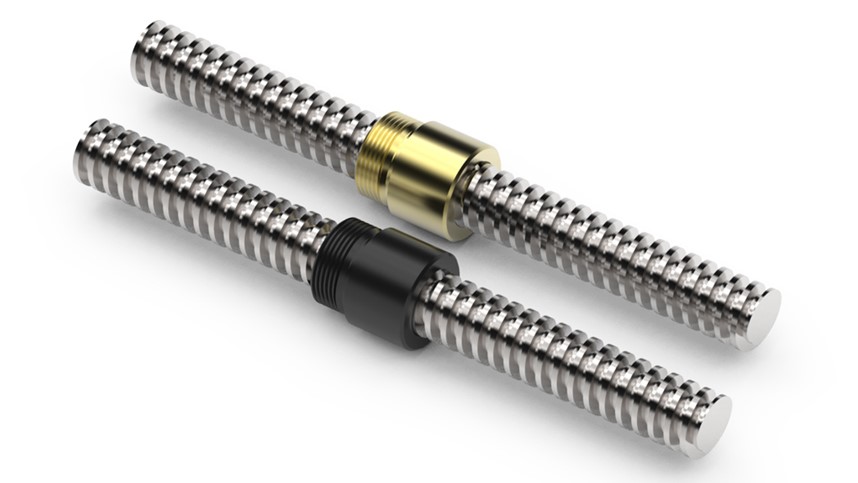Do you have a mechanical design project in the works? If yes, you'll likely need to consider a linear motion control solution. While various lead screws are available for use in mechanical design, Acme screws have characteristics that separate them from competing hardware, like roller screws and ball screws. The engineering advantages of precision acme lead screws may be just what you need to add value to your design.

Do you have a mechanical design project in the works? If yes, you'll likely need to consider a linear motion control solution. While various lead screws are available for use in mechanical design, Acme screws have characteristics that separate them from competing hardware, like roller screws and ball screws. The engineering advantages of precision acme lead screws may be just what you need to add value to your design.
What Is an Acme Lead Screw?
Acme screws are lead screws that are designed to translate rotary motion into linear motion. They have a trapezoidal thread profile with a standard included angle of 29 degrees (some Helix Linear screws use 40 degrees). Unlike roller and ball screws, Acme screws operate using sliding contact. Acme lead screws have efficiencies ranging between 20 and 80 percent. Lubrication options and material selection influence efficiency and should be considered when selecting an acme screw for your application.
What characteristics of an Acme lead screw make it such a desirable piece of hardware in mechanical designs?
5 Characteristics of an Acme Lead Screw
1. No Breaking System Required
When a lead screw is not under power, the load can push against the screw and rotate it; an effect called back driving. Unlike other types of lead screws, Acme screws are self-locking when the selected efficiency is below 35 percent. Ball screws, on the other hand, typically require a brake to secure the load. This self-locking property also makes Acme screws ideal for vertical applications. The use of Acme screws reduces your part count and eliminates the need for a breaking system, which translates to significant cost savings.
2. Anti-Backlash
All lead screws, by design, require some clearance to operate. Anti-backlash Acme lead screw nuts are engineered to take up the clearance between the nut and screw in instances requiring high positional accuracy. These anti-backlash acme leadscrews and nut assemblies can approach the accuracy of more complicated and expensive ball screws.
3. Low Maintenance
Depending on the material it's manufactured from, some Acme screws don't require any lubrication to function. This makes them especially useful in applications where maintenance is difficult. Without circulating balls or other moving parts, Acme screws also run quieter than other types of lead screws. Additional customization options include corrosion-resistant materials that allow them to function in harsh operational environments. They are less sensitive to particulate contamination.
4. Highly Customizable
The use of Acme Screws provides machine designers and engineers incredible design flexibility. Instead of designing a product to fit the screw, you can design the screw to fit the product and application needs. There are hundreds of options and different configurations available. Learn more about Acme screw customizations HERE.
5. Cost-Effective
While not an engineering characteristic, we'd be remiss if we didn't mention the cost savings Acme lead screws can provide product developers when compared to other types of lead screws. Acme screws typically cost 25 to 80 percent less than ball screws. These cost savings can be passed along to your customer, making your product more competitive in the market.
Learn more about the cost-saving benefits of using Acme screws in your design HERE.
Helix Linear Technologies manufactures precision Acme screws with diameter sizes ranging from 1/8" to 6." For more information on Acme screws and how you can incorporate them into your next project, contact Helix Linear Technologies today or download our Engineer's Guide to Identifying Lead Screw Thread Forms HERE.

